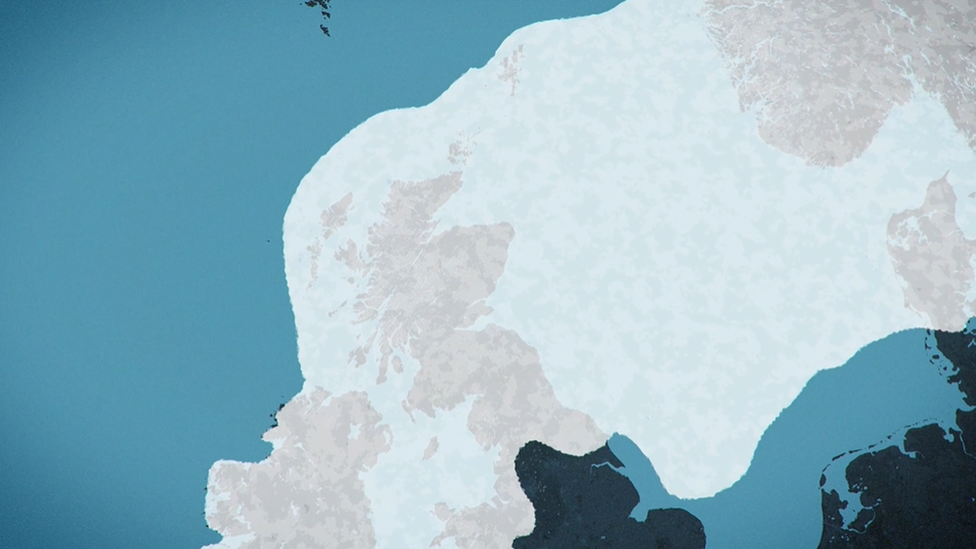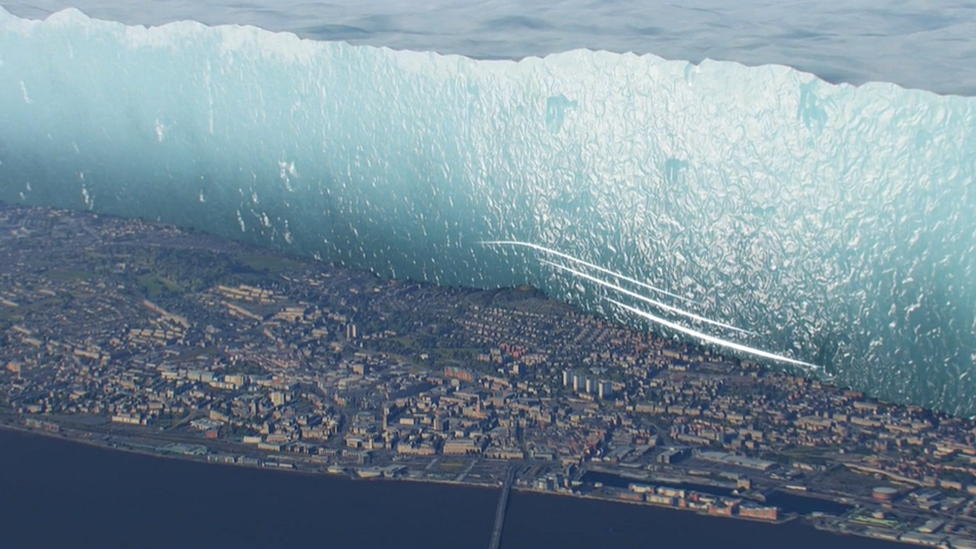How the power of the ice age glaciers transformed Tayside
- Published
How the Ice Age shaped Dundee Law
The dramatic impact of the Ice Age on the Tayside landscape has been revealed in a new video visualisation.
The project shows how the power of glaciers 20,000 years ago shaped city landmarks such as Dundee Law.
It illustrates how the area that is now Dundee was covered by more than 1km of solid ice
The video, external will feature on a dedicated website, external as well as being shown as part of an exhibition at the city's McManus., external
The project was created by glaciologist Max Van Wyk de Vries, external and animation lecturer Kieran Duncan., external

The whole of Scotland sat beneath an enormous ice sheet
Kieran, who lectures at Dundee's Duncan of Jordanstone College of Art and Design, said: "I think the initial plans for Max were more using satellite imagery and things like that, quite sort of topographical.
"But I came into it from more of a visual storytelling type angle, so we met in the middle and it worked out well.
"We got some really cool shots, and added a lot of live action and time-lapse elements to build a bit of a narrative around it."
The visualisation shows that the whole of Scotland sat beneath an enormous ice sheet that extended far into the North Sea.
It said that Scotland would have looked similar to present-day Greenland.

The area that is now Dundee was covered by more than 1km of solid ice
The 174m-tall Dundee Law, which overlooks the city today, was previously under more than 1km of solid ice.
It shows that as the enormous glacier flowed east toward the ocean it scraped and smoothed the bedrock below.
Max, a PHD student at the University of Minnesota, said the first thing that caught his attention was a series of ridges beside the Sidlaws.
He said: "You can see that the whole landscape almost looks like a comb has been passed over it - it is really striking.
"When you look closely at a lot of distinctive landmarks like Balgay Hill or Dundee Law you can see the shape of a hill has been dragged out by the glaciers."

Max Van Wyk de Vries said many contemporary landmarks were shaped by the ice melting
When the Ice Age began to end, the receding ice sheet revealed prominent hilltops.
The flowing ice created the distinctive ramp shape on the east side of Dundee Law, while melt water rolled down the valleys to form the Tay.
The visualisation warns that only a few degrees of warming transformed Scotland from a "massive ice sheet into the land we know today."
Max said: "It didn't take all that much to turn Scotland from looking like Greenland to looking like the comfortable place it is to live today.
"In a similar way, it won't take much to turn Greenland from the massive ice sheet it is today into an ice-free landscape.
"And indeed a lot of predictions show we are already on that path."